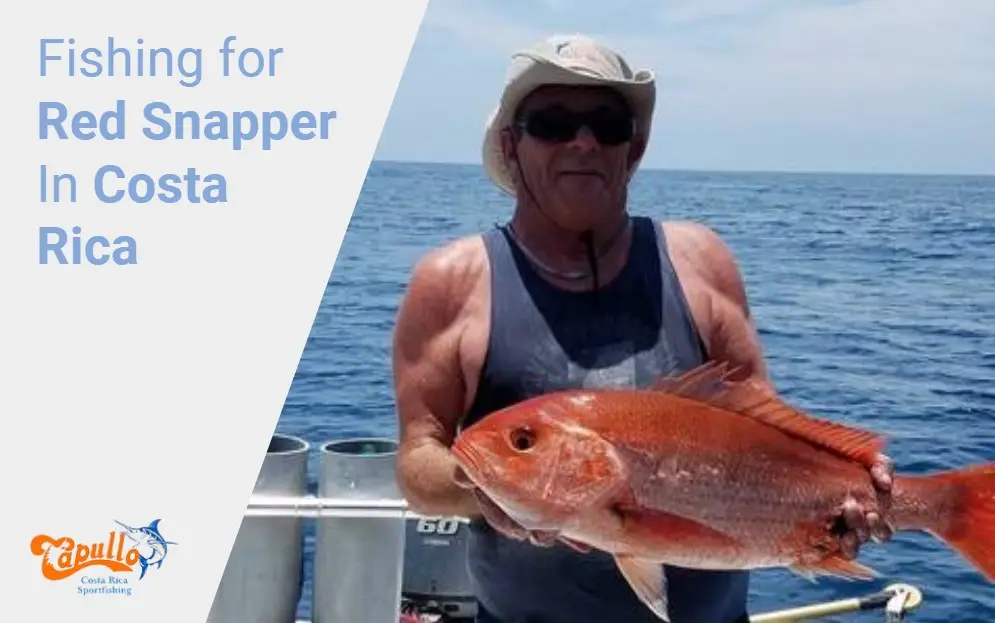
Red Snapper: Catching and Understanding Red Snapper FIshing in Costa Rica 2023
Red Snapper, often recognized by its deep red hue, is celebrated in Costa Rica for its large size and triangular face with sloping features. This carnivorous fish, with its enlarged canine teeth, offers a thrilling challenge for all types of anglers fishing in the Pacific.
If you are looking to catch Red Snapper in Costa Rica, but don’t want to worry about choosing the perfect location or getting the right equipment, book a Red Snapper fish charter trip with Capullo Sportfishing Charter, located in Guanacaste Province, Costa Rica.
For more information call: +1 506-8569-3516
From US or Canada you have to dial +11 506 8569 3516
Table of Contents
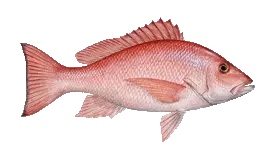
What is a Red snapper fish?
The northern red snapper, scientifically known as Lutjanus campechanus, is a species of marine ray-finned fish, a snapper belonging to the family Lutjanidae. It is native to the western Atlantic Ocean, the Caribbean Sea, and the Gulf of Mexico. This species is both commercially important and sought-after as a game fish. In Spanish, it’s referred to as “Pargo Rojo,” “mero,” “huachinango,” or “chillo.”
What does a Red Snapper Fish look like?
Red snappers have a sleek, streamlined body. Their eyes are a distinctive red, and their scales exhibit a bright red hue that fades to a lighter shade on the belly. The fish has a medium to large size, spiny dorsal fin, and a sloped profile. While they don’t have stripes, younger snappers might show a faint blue or white streak on their sides. They have a long triangular face with the upper part sloping more strongly than the lower. Their jaws are equal, with the lower one sometimes slightly projecting. They also have enlarged canine teeth, which is why they are called “snappers.”
The Red snapper’s body is very similar in shape to other snappers, such as the mangrove snapper, mutton snapper, lane snapper, and dog snapper. They all feature a sloped profile, medium-to-large scales, a spiny dorsal fin, and a laterally compressed body. They are rather large and are red in color, with more intense pigment on the back. Juvenile fish can also have a dark spot on their sides, below the anterior soft dorsal rays, which fades with age.
What is the size of a Red Snapper Fish?
Northern red snappers typically weigh between 5 to 10 pounds and can reach lengths of up to 35 inches. However, the largest Red snapper ever caught weighed over 50 pounds. They can live a long time—red snapper as old as 57 years have been reported in the Gulf of Mexico and as old as 51 years in the South Atlantic.
Where can Red Snapper Fish be caught?
The northern red snapper is found in the Gulf of Mexico, the Caribbean Sea, and the southeastern Atlantic coast of Mexico and the United States and much less commonly northward as far as Massachusetts. They commonly inhabit waters from 9–60 m (30–200 ft), but can be caught as deep as 90 m (300 ft) on occasion. They stay relatively close to the bottom and inhabit rocky bottoms, ledges, ridges, and artificial reefs, including offshore oil rigs and shipwrecks.
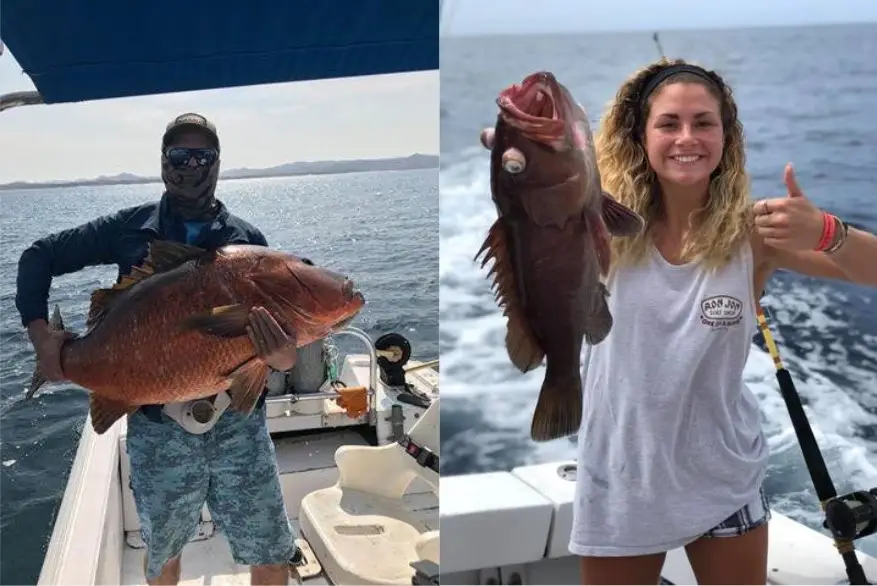
What are the best places to catch Red Snapper in Costa Rica?
In Costa Rica, Red snappers can be caught both from the shore and in deeper sea regions, especially around rocky outcrops and banks.
Do you need a boat to catch Red Snapper in Costa Rica?
While a boat increases the chances of catching Red snapper by accessing deeper waters, it’s not strictly necessary. Kayak fishing is also an option. For a specialized experience, consider a Red Snapper fishing charter, like Capullo Sportsfishing Charter offers. All the right equipment with the best locations for red snapper are planned in advance. Contact us today to book your Red Snapper Charter trip.
What is the best time to catch Red Snapper in Costa Rica?
The rainy season, especially between May and November, is ideal. Early mornings and late afternoons are the best times of day, with overcast conditions being particularly favorable.
How to catch a Red Snapper Fish in Costa Rica?
Bottom fishing around rocky structures is the most effective technique to catch Red Snapper in Costa Rican waters. Below is a short guide on how to catch them:
- Understanding the Terrain: Costa Rica’s coastal waters are dotted with a myriad of underwater rocky structures, ledges, and reefs. These natural formations are hotspots for Red Snapper as they provide shelter, breeding grounds, and a rich source of food. Before setting out, it’s beneficial to have a good understanding of the local underwater topography or to hire a local guide who knows the best spots.
- Equipment and Tackle: For bottom fishing, a medium-heavy rod paired with a sturdy reel is ideal. Given the depth and the rocky environment, a strong braided line is recommended to prevent breakages. A sinker or weight is essential to ensure the bait reaches the desired depth and stays near the rocky bottom.
- Bait Selection: Red Snapper is known for its voracious appetite. Live baits such as pinfish, sardines, or shrimp are particularly effective. However, cut baits like squid or smaller fish can also attract a bite. The key is to ensure the bait is fresh and presented naturally.
- Setting the Hook: Once the bait is at the desired depth, it’s a waiting game. Red snappers are curious and will often investigate the bait. When you feel a bite, it’s crucial to set the hook firmly to ensure a good catch, especially since the fish might be hiding or darting around rocks.
- Reeling and Landing: Given the rocky environment, it’s essential to reel in the fish steadily and avoid letting it swim into crevices or behind rocks, which can result in a lost catch or broken line. Having a net can assist in landing the fish once it’s close to the boat.
Capullo boats in Tamarindo.
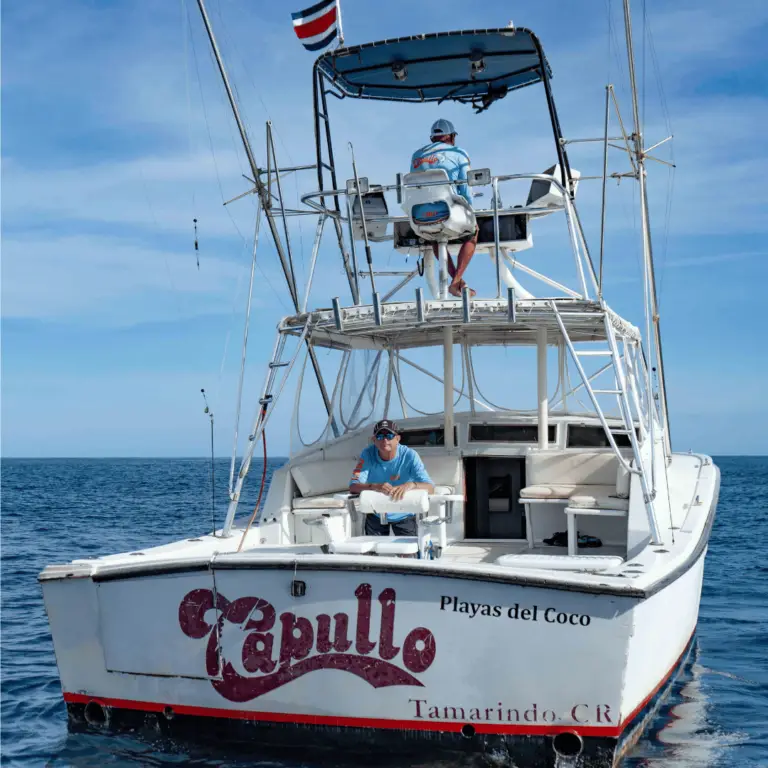
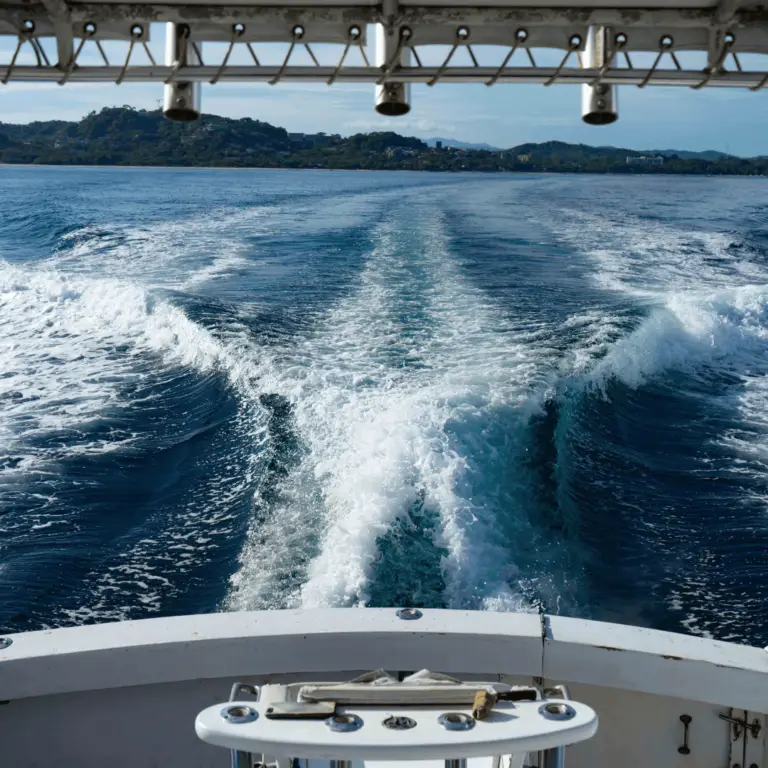
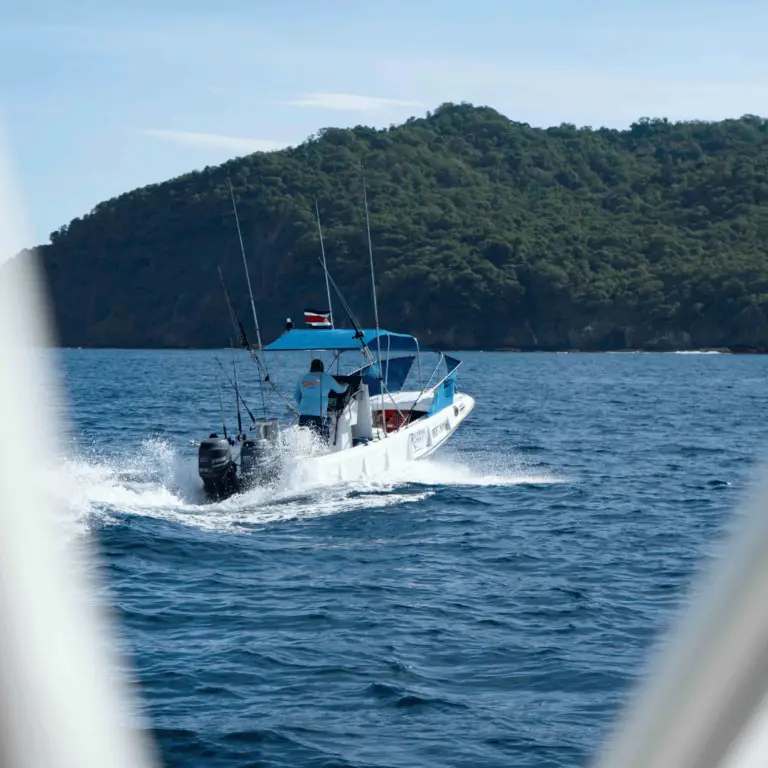


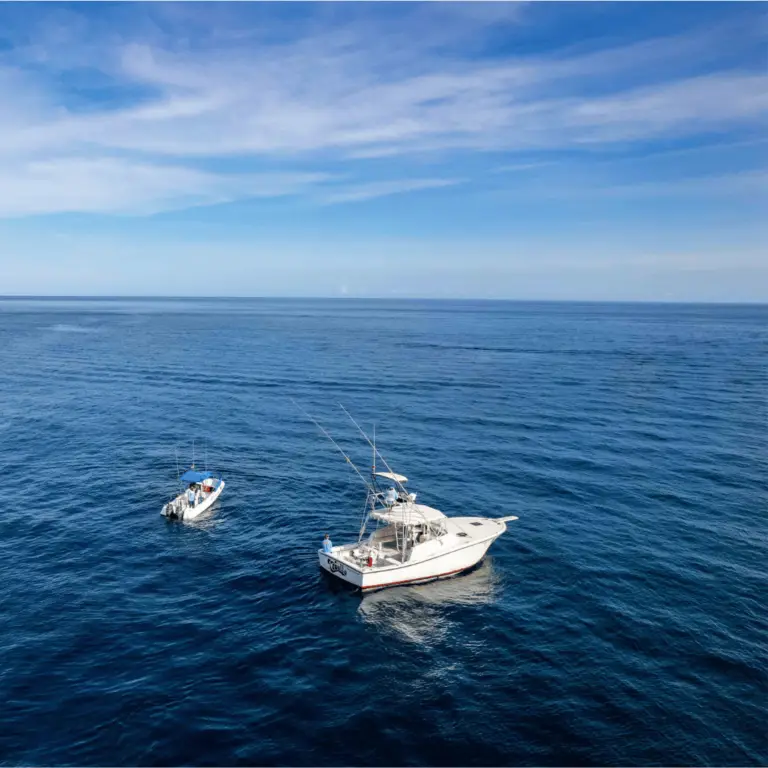
Does Costa Rica have any fishing regulations for catching Red Snapper?
Costa Rica generally allows anglers to keep Red snapper, but it’s essential to check current regulations. Catch and release is always encouraged for conservation.
How to safely release Red Snapper after catching it?
Handle the fish minimally and use a dehooking tool, ideally keeping it in the water.
FAQ:
How fast does a Red Snapper Fish swim?
Red snappers are not known for speed but rather their strength, only reaching speeds up to 5-15 mph. With that being said, if they feel threatened, they can reach far greater speeds
How long do Red Snapper live for?
They can live up to 57 years in the Gulf of Mexico and 51 years in the South Atlantic.
What do Red Snappers eat?
Their diet includes shrimp, crabs, and smaller fish.
Where do Red Snapper fish breed?
Red snappers tend to breed offshore in deeper waters.
Are Red Snapper Fish endangered?
They’re not endangered, but certain populations have been overfished.
Do Red Snapper Fish like warm water?
Yes, they prefer tropical and subtropical waters.
Can you eat Red Snapper after it’s caught in Costa Rica?
Yes, it’s a popular and delicious fish in many culinary dishes.
Do Red Snapper Fish have teeth?
The northern red snapper has short, sharp, needle-like teeth, but they lack the prominent upper canine teeth found in some other snappers.
